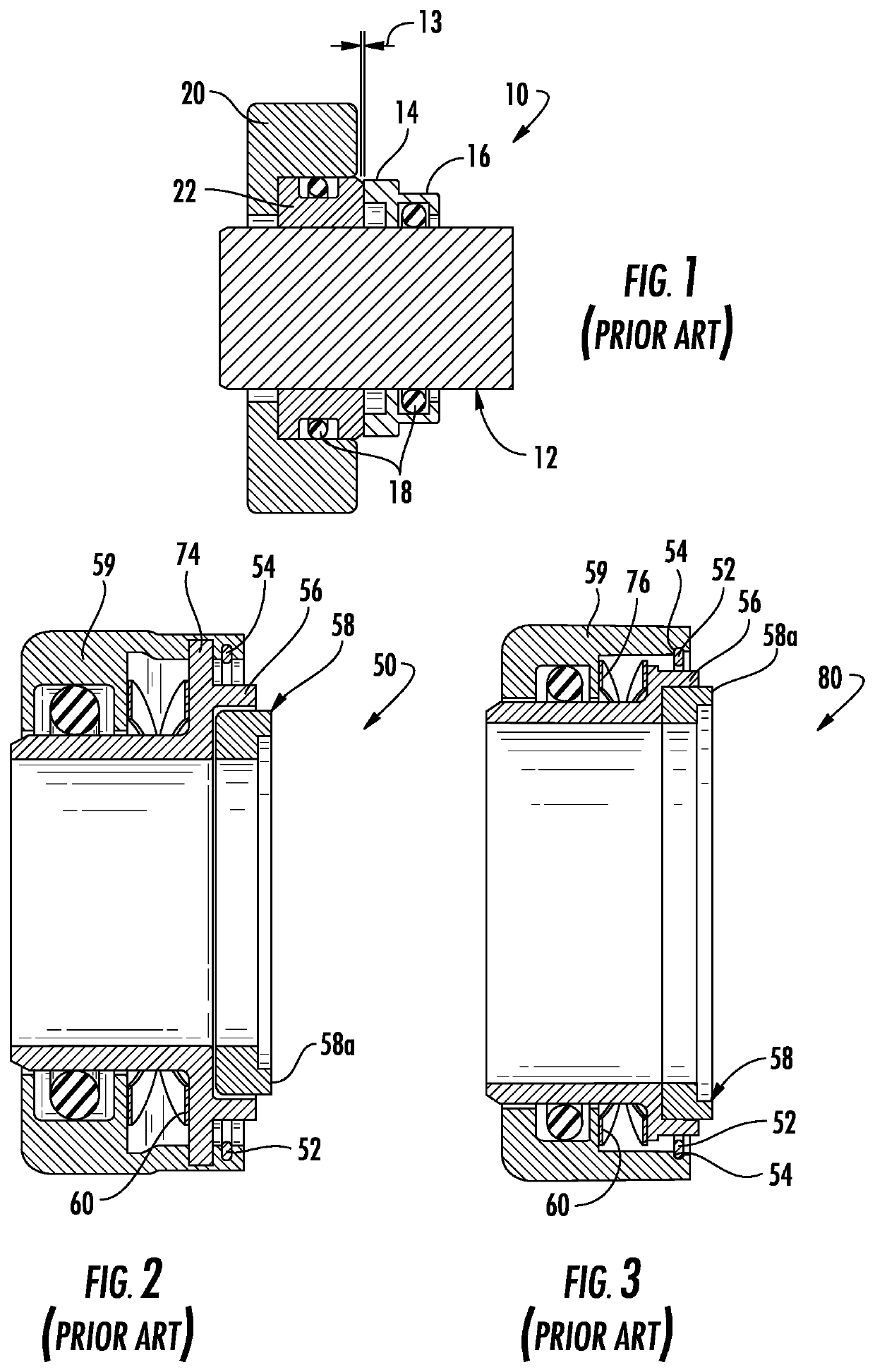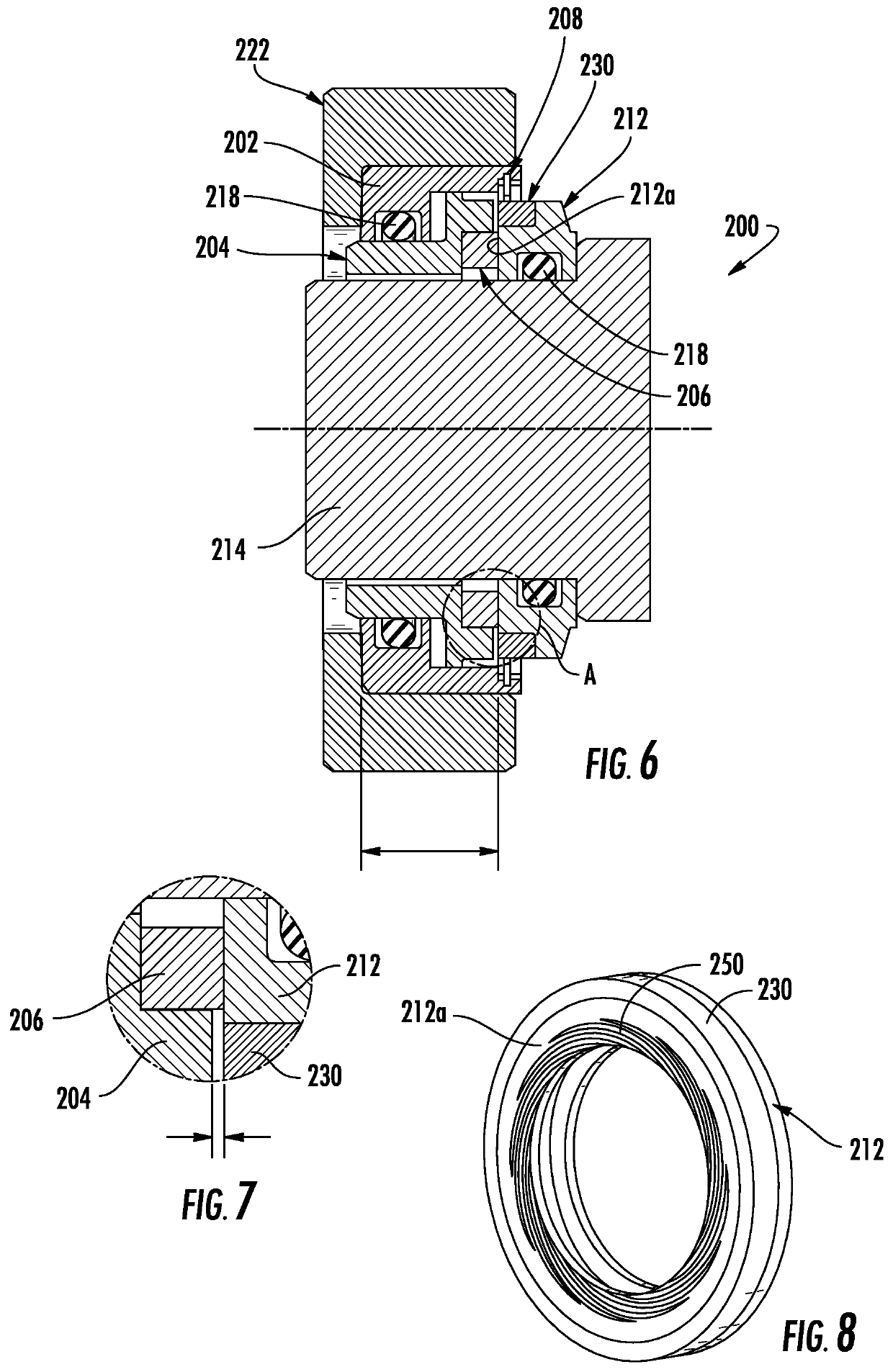Rotary face seal with magnetic puller loading
a magnetic puller and rotary face technology, applied in the direction of engine seals, mechanical apparatus, engine components, etc., can solve the problems of large variation in the loading of the spring mechanism, affecting the service life of the seal, and requiring customer hardware modification, so as to improve the service life and minimize variation. , the effect of improving the sealing performan
- Summary
- Abstract
- Description
- Claims
- Application Information
AI Technical Summary
Benefits of technology
Problems solved by technology
Method used
Image
Examples
Embodiment Construction
[0025]The rotary face seal of the present invention with magnet loading replaces the spring mechanism or a magnet installed in a housing with improved magnetic technology that provides a more consistent load with minimal variation, which is not affected by natural frequency and material fatigue due to cyclic loading. This improves the seal performance and service life by eliminating the issues that compromise the effectiveness of the spring mechanism. The present invention as envisioned uses magnetic technology attached to the outside diameter of the rotary ring which is attached to the shaft. The single pole magnetic assembly design is achieved by either axial or radial magnet orientation. Thus, the tubular and single pole design of the magnet used in the present invention does not produce eddy currents due to its configuration and design.
[0026]Referring to FIGS. 4 and 5, which is a close-up view of the gap between the tubular magnet 130 and seal case 104, of the rotary face seal 1...
PUM
 Login to View More
Login to View More Abstract
Description
Claims
Application Information
 Login to View More
Login to View More - R&D
- Intellectual Property
- Life Sciences
- Materials
- Tech Scout
- Unparalleled Data Quality
- Higher Quality Content
- 60% Fewer Hallucinations
Browse by: Latest US Patents, China's latest patents, Technical Efficacy Thesaurus, Application Domain, Technology Topic, Popular Technical Reports.
© 2025 PatSnap. All rights reserved.Legal|Privacy policy|Modern Slavery Act Transparency Statement|Sitemap|About US| Contact US: help@patsnap.com



